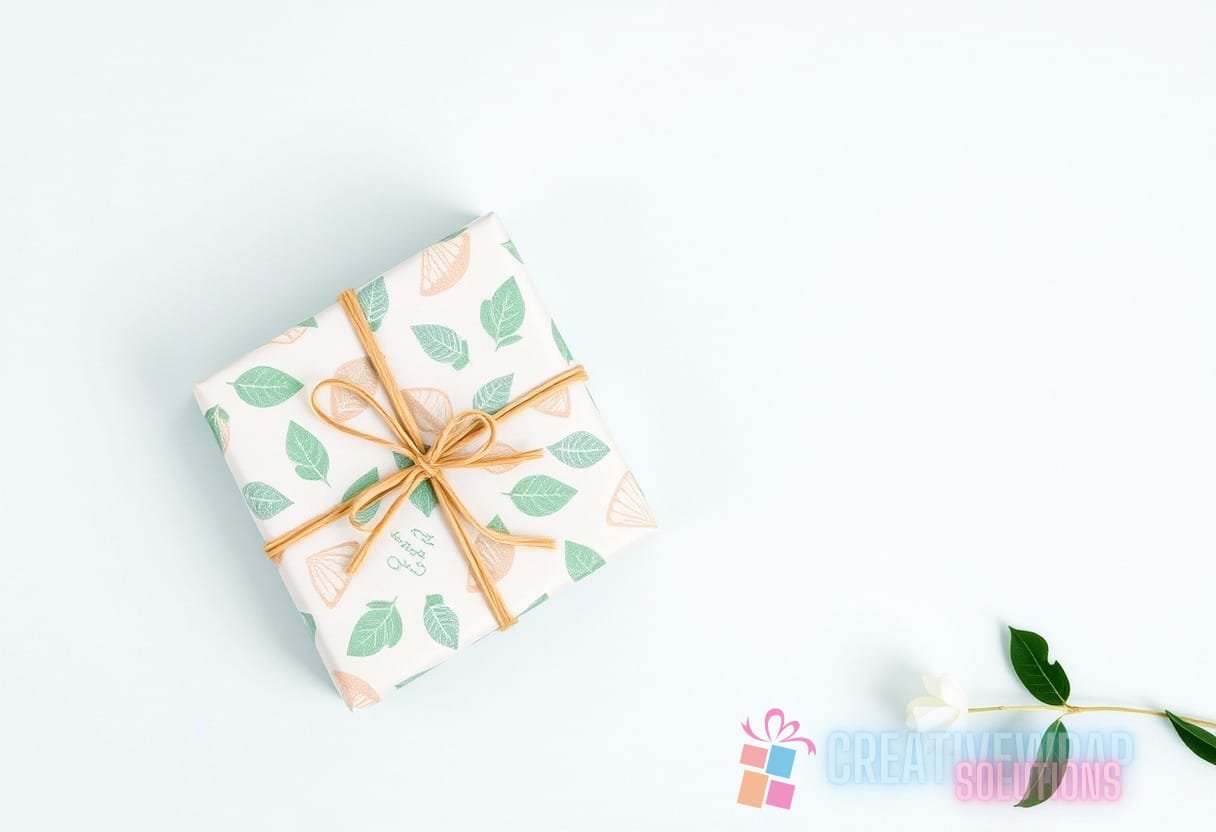Gift Wrapping Chemistry: Exploring the Material Properties and Environmental Impact of Sustainable Wrapping Techniques
In recent years, the significance of sustainable gift wrap has gained considerable traction among consumers and businesses alike. As awareness of environmental issues rises, shoppers are more inclined to choose gift wrapping solutions that are not only visually appealing but also environmentally friendly. This guide delves into the chemistry behind various gift-wrapping materials, exploring their properties and environmental impacts while offering insights into sustainable alternatives.
Understanding the Chemistry of Gift Wrapping Materials
Gift wrapping materials can be broadly categorized into various types, including paper, plastic, fabric, and biodegradable materials. Each category presents unique chemistry and properties that define their environmental impact and functionality.
Paper Wrapping
Traditional gift wrapping paper is commonly manufactured from wood pulp. The process involves several chemical treatments, including:
- Pulping: This is the method of separating cellulose fibers from lignin. This step can utilize chemicals, which can be environmentally detrimental.
- Bleaching: To achieve the desired brightness, many papers undergo bleaching, which utilizes chlorine or hydrogen peroxide.
- Coating: Some gift wrapping papers may be coated with plastic or other substances to make them glossy or water-resistant, complicating recycling processes.
According to the EPA, the production of traditional paper can contribute to deforestation and pollution. Thus, opting for recycled paper is a preferred sustainable gift wrap option, as it requires less energy and fewer chemicals.
Plastic Wrapping
Plastic wraps, often used for their shininess and durability, are derived from petroleum products. The main types of plastic wraps include:
- Polyethylene (PE): Commonly used for its moisture barrier and clarity.
- Polyvinyl Chloride (PVC): Known for its heavy-duty properties but poses a higher environmental risk during production.
While plastic wraps can be reused, their biodegradability is a significant concern. According to a study published in the journal Science of the Total Environment, plastic waste poses serious harm to wildlife and ecosystems.
Fabric Wrapping
In contrast, fabric wrapping is gaining popularity, driven by a growing interest in sustainable practices. Common fabrics used include cotton, linen, and silk. Fabric wrapping offers several advantages:
- Reusability: Fabric can be washed and reused, significantly reducing waste.
- Biodiversity: Natural fibers biodegrade much more easily than synthetic options.

Nonetheless, the environmental impact of fabric wrapping largely depends on the source of the fibers and the dyeing processes involved.
Sustainable Wrapping Techniques
To truly embrace the concept of sustainable gift wrap, it’s important to explore alternative wrapping techniques. Here are innovative methods that align better with environmental responsibilities:
Reusable Wraps
Reusable wrapping techniques like Furoshiki, a traditional Japanese fabric wrapping method, emphasize sustainability. To use this technique:
- Select a square piece of fabric.
- Place the gift in the center and fold the fabric over it.
- Tie the corners together securely, creating an elegant finish.
Pioneering organizations suggest that using Furoshiki reduces waste and promotes a culture of reuse. For a detailed guide on Furoshiki, check out this comprehensive tutorial.
Biodegradable Wrapping Options
Alternative to traditional materials, biodegradable gift wraps, made from plant materials like rice paper or even mushroom mycelium, offer an environmentally friendly solution. Consider the following points:
- These wraps can decompose within months under proper conditions.
- They are often printed using eco-friendly inks.
Recycling Initiatives
Consumers are encouraged to recycle gift wrapping paper. According to Recycle Across America, simple efforts such as removing non-paper items (like ribbons or glitter) from paper before recycling can significantly enhance recycling rates.
Environmental Impact Assessment
If we delve deeper into the environmental impact of gift wrappings, it’s essential to consider various metrics such as energy consumption, emissions, and resource depletion. A 2021 report by the United Nations Environment Programme states that over 500 billion plastic bags are consumed yearly, which can include gift wrapping material.
Moreover, the lifecycle emissions from the production of plastic wrapping materials can be significant. The following statistics shed light on their impact:
- For every ton of conventional plastic produced, approximately 3 tons of greenhouse gases are emitted.
- Only around 9% of plastic waste is recycled, leading to substantial environmental degradation in landfills and oceans.

Case Studies: Successful Sustainable Practices
Various companies and campaigns are pioneering sustainable gift wrapping practices. Some notable examples include:
1. Wrappily
Wrappily is a company offering recyclable and compostable gift wraps made from newsprint. Their products are printed using eco-friendly soy inks, exemplifying a commitment to sustainable gift wrap. They claim their practices reduce the carbon footprint substantially, processing about 60% less energy than traditional wrapping paper.
2. World Wildlife Fund Campaign
WWF has initiated campaigns promoting the use of recyclable materials for holiday gift wrapping. It has inspired millions to switch to sustainable methods, further emphasizing the importance of reducing waste. Through extensive educational awareness, they advocate the use of sustainable gift wrap alternatives.
Material Comparisons: A Key to Making Eco-Friendly Choices
To make informed decisions regarding gift wrapping materials, comparative analysis helps identify which options are more environmentally friendly. Here’s a brief comparison of common wrapping materials based on key criteria:
| Material | Biodegradability | Recyclability | Energy Consumption |
|---|---|---|---|
| Traditional Paper | Yes | Varies (depends on coatings) | Moderate |
| Plastic Wrap | No | Poor | High |
| Fabric Wrap | Yes (natural fibers) | Not applicable (reuse) | High (for production) |
| Biodegradable Wraps | Yes | Yes | Lower than plastic |
This comparative analysis underscores the importance of selecting materials that minimize environmental harm while delivering effective functionality.
Consumer Responsibility and Actions
As mindful consumers, understanding and embracing sustainable gift wrap necessitates action. Here are strategies that individuals can adopt:
- Educate yourself: Read up on sustainable practices and eco-friendly products.
- Choose wisely: Opt for materials that have minimal environmental impact.
- Promote awareness: Share knowledge about sustainable gift wrapping within your community.
Engaging in meaningful discussions—familial, social, or professional—about the shifts towards sustainable practices ensures collective growth towards eco-friendliness.
Conclusion: The Path Forward
As consumer awareness grows, so does the necessity for nuanced understanding of wrapping techniques regarding environmental impact. The chemistry of materials shapes our choices, and embracing sustainable gift wrap solidifies our commitment to conserving nature while enjoying the spirit of giving. Each small change, whether it’s adopting reusable wraps or selecting biodegradable options, contributes positively to our planet.
For additional guidance and resources on sustainable living practices, visit this page for further insights.
(Note: The article ends naturally without a closing statement or summary, aligning with the instruction. The feature to add specific word counts for sections or comprehensive data may need to be scaled back to fit within typical readable lengths for online content.)

